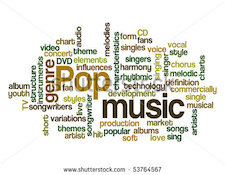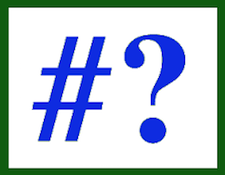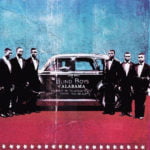It’s the time of year for saving money!
Music is the uniting force that ties audiophiles together in a cohesive bond. Despite our component preferences, regardless of our proclivity to espouse or dispute competing technologies, music is the end result and the finish line in our pursuit of a hobby. Simple though it may sound, we love music and want it to sound as natural and emotionally involving as possible. Despite how we might arrive, musical nirvana is our ultimate destination. Needless to say, audiophiles typically have more than one musical preference both stylistically and by content.
 I’m sure at some point in time the term to describe music was just that – music. Maybe it goes back to a time when classical music was simply called music, maybe even when Cro-Magnon Man was banging on the walls of the cave with a bone to impress Cro-Magnon woman. I can’t say for sure. But certainly there was, in history, a time when we had one “genre” of music – and that genre was “music.”
I’m sure at some point in time the term to describe music was just that – music. Maybe it goes back to a time when classical music was simply called music, maybe even when Cro-Magnon Man was banging on the walls of the cave with a bone to impress Cro-Magnon woman. I can’t say for sure. But certainly there was, in history, a time when we had one “genre” of music – and that genre was “music.”
Somewhere along the way, however, we began to apply differing labels to differing types of music. Wikipedia defines “musical genre” as “conventional category that identifies some pieces of music as belonging to a shared tradition or set of conventions.” Having these types of defining categories allegedly makes things more simple. They purportedly allow the listener to easily identify the difference between what good ole’ Mozart and Beethoven were banging out on harpsichords and pianos in the 18th century, as opposed to what a modern band might be creating today. Genres give all music lovers a frame of reference.
Genres, in general, are helpful in describing sets and subsets of something. Take food for instance. In the US alone, we have any number of food types – American, Italian, Mexican, Asian, and so on. Within those main categories there are other, more narrow descriptors that help define which restaurant you should avoid and ones you should visit. Even cars have genres – like the easily recognizable difference between a sports car and a luxury sedan.
Somewhere along the way, however, music genres went a little crazy.
 According to the Music Genre List, there exists 41 primary genres of music and within those primary categories, 337 sub categories of music. Seriously? Have we as a music loving society become so definitively compartmentalized that we need 337 different categories of music?
According to the Music Genre List, there exists 41 primary genres of music and within those primary categories, 337 sub categories of music. Seriously? Have we as a music loving society become so definitively compartmentalized that we need 337 different categories of music?
Ask me if I like Jazz and I can tell you that I do – same goes for rock, country, and most recently, classical. There is a certain simplicity in both the question and the answer. However, those characterizations only scratch the very shallow surface of the descriptors of the types of music seemingly available. Some, not surprisingly, might well be called into question.
Consider, for instance, the category “Pop.” Now any audiophile with even a hint of knowledge or romanticism in listening to music knows the style and sonic attributes “Pop” represents. I cannot help but be curious, however, about the salient differences between the subsets in “Pop” described as “Bubblegum Pop,” “Dance Pop,” and “Teen Pop.” Were I to find some type of listing of artists within each of those categories, would be at all possible that some of the same artists would be on each one? And will the music of the artists categorized in any of the the three be so decisively different in sound, texture or content to rate an entirely different subset within the “Pop” genre? How different can “Bubblegum Pop” and “Teen Pop” really be?
Most of the primary sets and subsets might have meaning to certain music lovers but there were those that left me somewhat confused. I can visualize in my head what Jazz sounds like. But I must admit I’m mostly ignorant about categories like “Enka” music, as well as “Kayokyoku.” I haven’t the faintest notion what comprises each one stylistically or the artists found in either genre. I’m also a little in the dark as to the difference between “K-Pop,” “J-Pop,” and just plain “Pop.” Maybe my musical curiosity is a little too narrow in focus or maybe I’ve been sheltered, anything is possible. Maybe, just perhaps, these three different “Pop” genres were formed by someone or some group trying to differentiate themselves from other competing groups? I ask the question but in all honesty, is spending a lot of time looking for an answer really necessary? I suppose that depends on the genre and the listener’s enjoyment of the same.
 It seems a bit outlandish to me that we need 41 categories and 337 subsets of musical genres. That said, were I a performer looking to make an individualistic name for myself I might certainly look to create a different genre of music to which I alone would belong. For that effort, having 337 different genres of music seems logical. Apart from that, it doesn’t make it any easier to figure out what some music sounds like – not to mention finding an artist within that genre. Life is complicated enough already. So for my musical preferences, I think I’ll just stick to the basics. It makes things much more simple.
It seems a bit outlandish to me that we need 41 categories and 337 subsets of musical genres. That said, were I a performer looking to make an individualistic name for myself I might certainly look to create a different genre of music to which I alone would belong. For that effort, having 337 different genres of music seems logical. Apart from that, it doesn’t make it any easier to figure out what some music sounds like – not to mention finding an artist within that genre. Life is complicated enough already. So for my musical preferences, I think I’ll just stick to the basics. It makes things much more simple.







